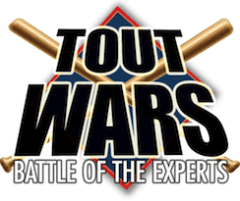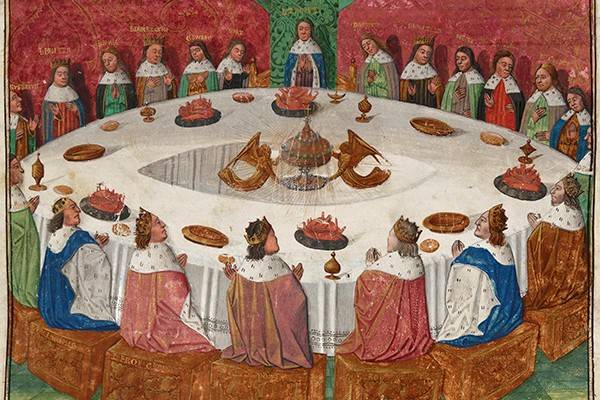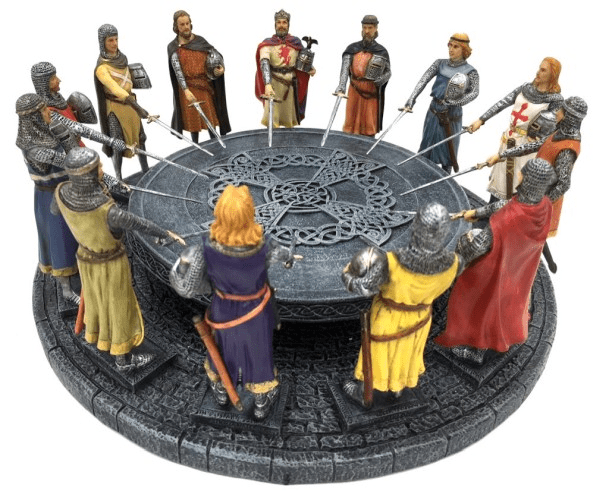If Frank Sinatra can have regrets, so can the Touts.
What is your biggest draft day regret?
Jeff Boggis (Fantasy Football Empire, @JeffBoggis): My biggest draft day regret is drafting a starting pitcher with the 4th overall pick. I drafted Spencer Strider and he’s out for the season. Too many injuries to starting pitchers this season. I passed on the likes of Julio Rodriguez and Bobby Witt Jr.. Big mistake.
Chris Clegg (Pitcher List, @RotoClegg): My biggest draft day regrets have come in leagues where I invested heavily in pitching. Obviously, we could not predict the injuries, but passing up on good bats has hurt me in several places. Especially AL LABR where my three most expensive draft day buys were Gerrit Cole, Pablo Lopez, and Josh Hader.
Chris Blessing (BaseballHQ, @C_Blessing): My biggest draft day regret is that I don’t carb load enough before the draft. If I am overanalyzing a pick when I am on the clock or bidding, it’s a bad omen. You make mistakes when you don’t trust your instincts and preparation on draft day. Every pick I’ve regretted this year has been picks I’ve overanalyzed, whether it’s my multiple shares in Andres Gimenez or me wanting to overpay for pitching when there are similar gets to be had later in the draft or at a lower price.
Patrick Davitt (BaseballHQ, @patrickdavitt): Across the board(s), I relied too heavily on “boring old veterans” at seemingly great prices. Lindor, Arenado, Goldschmidt, Springer, Santana, Abreu … ugh.
Brian Entrekin (Fantasy Pros, BaseballHQ, @bdentrek): My biggest regret is taking 1B for granted. I really thought the position was deep and that waiting for Rizzo, Bell and others would be fine. That has not been the case. I loved Josh Naylor but thought waiting was better answer…definitely a major regret of mine.
Derek Carty (RotoGrinders, @DerekCarty): Spending $38 on a guy who made two starts with a 7.00 ERA.
JB Branson (Rotoballer, @RowdyRotoJB): The amount of collective money I spent across my leagues on two young Texas Outfielders with 75 combined big-league PA.
Peter Kreutzer (Rotoman.substack.com, @kroyte): In pursuit of an inexpensive pitching staff I made risky plays on the free agents Blake Snell ($5) and Jordan Montgomery ($5) and injured guys Braxton Garrett ($7) and Jameson Taillon ($3) and was very excited when both Snell and Montgomery landed in the NL. i ‘won” the injured guys bets, too, insofar as they’re both pitching, but Snell, Montgomery, and Garrett have been terrible and have offset the strong efforts of Max Fried, Jordan Hicks, and Taillon. I regret getting excited.
Ariel Cohen (CBS Sports, @ATCNY): I’ll answer this a bit differently than most. I don’t have too many regrets – because I stuck to my draft process. There is a range of outcomes that can happen – both on the positive and negative side. I do NOT regret passing on Elly De La Cruz. I think that was the right well thought out process. His draft price was prohibitive, and he was hitting (for a month) almost his upside outcome. I don’t regret drafting Acuna at 1.1 – because that was the right player to bet on to hold a very high value. Unless you knew he was going to be injured for the season on his “good” knee, there was nothing wrong with that process. Perhaps maybe I regret not having even more Taylor Ward shares — but auctions are dynamic, and there were other bargains available to me at the time that I couldn’t pass up. On the whole, I choose not to regret what I did on draft day 2024.
Brent Hershey (Baseball HQ, @BrentHQ): This might be a “too many teams” problem … but not rostering (mostly young-ish) players who I had identified as soft “targets” for 2023 who didn’t have good seasons last year, for either health or performance reasons. It’s the year-too-early syndrome: C Schmidt (pre-injury), Bohm, N Cortes, Sale, J Ryan, etc. It’s succumbing to recency bias, somehow figuring they were lost causes since they struggled in 2023. Injuries happen, and not all the youngsters get better. I’ll be revisiting my 2024 prep with this in mind for 2025.
Justin Mason (Friends With Fantasy Benefits, @JustinMasonFWFB): My biggest draft day regret is not getting enough power. While I like to draft a balanced roster, I didn’t put enough emphasis on getting a good power base for my teams and with the dearth of power this season, it is hard to make up for it on the waiver wire.
Andy Behrens (Yahoo Fantasy Sports, @andybehrens): It’s not specifically a Tout regret, but I can tell you I’m not entirely pleased with the production I’ve received from Nolan Jones across various leagues. (I’m ashamed to say the exact number.) We all knew he’d regress to some extent, but I still thought the power/speed totals would ultimately prove useful. Instead, he was a mess to begin the season, then injured and reinjured, and now the team is hesitant to end his rehab due to an ongoing inability to hit. So yes, I am experiencing certain Jones-related fantasy regrets.
Jeff Zimmerman (Fangraphs, @jeffwzimmerman): First, I scheduled an Auction for the fourth draft over the weekend. I was burnt by that point, and it showed. I need to be rested before one. Second, too many leagues. This year I’ll be able to plan around the CLQ at the NFBC. Third, I need to get one more arm in the first 10 rounds. My teams are unbalanced heavily to the hitting side. Finally, no more paying up for untalented stolen base threats (e.g. Hoerner). There are plenty of untalented stolen bases threats available on the waiver wire.
Michael A. Stein (Fantasy Judgment, @FantasyJudgment): My biggest regret is targeting pitching early because of all the injuries I have sustained. I don’t specifically regret the individual pitchers I drafted who deserved to be taken early, but that decision to aim high on upper-echelon starters early in drafts gave me a false sense of security to pass on additional pitching depth over the next several rounds. This has left me with a lack of depth that I have not been able to overcome. I also underestimated the availability of power hitters because I was focusing on players with more versatility given the increase in stolen bases.
Frank Ammirante (The GameDayHQ, @FAmmiranteTFJ): My biggest regret is not getting any Shota Imanaga shares. I liked him but I should have prioritized him more.
Ray Flowers (Fantasy Guru, @TheRayFlowers): Recommending to anyone it was safe to draft Corbin Carroll. Obviously, we all missed on him, but his effort to date has been simply disastrous.
Dr. Roto (DrRoto.com, @DrRoto): Waiting on closers!! Taking Tanner Scott has been detrimental to more than one of my rosters.
Scott Engel (The Game Day, @ScottETheKing): Not being more aggressive on superstars, especially when I nailed Brice Turang, Jordan Westburg, Maysn Winn, Jurickson Profar, and Jack Flaherty during dollar days. I did not spend up enough for prime power in the Mixed Auction and I am not feeling the overall impact of my cheaper gems enough.
Rudy Gamble (Razzball, @RudyGamble): Drafting Strider over Bobby Witt with pick 2 in my Main Event was catastrophic. Not thrilled about paying full retail price for Wyatt Langford in that draft either.
Fred Zinkie (Yahoo/Rotowire, @FredZinkieMLB): Two words. Corbin Carroll.
Michael Govier (Pallazzo Podcast, @mjgovier): Justin Mason did me a massive solid by drafting for me in NYC since I couldn’t make it last minute. I’ll never forget that. I can’t use my Tout team for this question, so I’ll go in another direction. My draft day regret comes from sticking to diversification across multiple drafts & formats instead of sticking to the prep work I did in the offseason which revealed to me the players who offered greater value beyond their generally expected output based on auction price. We diversify across multiple drafts to hopefully limit our risk & exposure to being universally stuck with a player who may not live up to our expectations in-season. The threat of a player missing large amounts of time due to unforeseen injuries also strikes fear in the hearts of fantasy managers everywhere. Going all in on players analyzed from multiple perspectives certainly holds boom or bust potential. My point is simple: if you trust your work & feel secure about the analysis you’ve done, then I say ride the snake! It’s worth it! Yes, injuries can derail your season without any warning, but for volume players the strike-it-rich potential of sticking with your guys is very appealing to me. If the price is working the waiver wire a little bit harder than I wanted to, I still say it’s worth the payout. In the end are your goals focused on dominating your home league only or would you rather achieve total hegemonic control across several leagues?
CJ Kaltenbach (Fantasy Guru, @TheSeigeDFS): Assuming the baseball wouldn’t change again. over drafted pitching thinking it would be at a premium when instead it’s hitting that’s at a premium
Alex Chamberlain (FanGraphs, @DolphHauldhagen): For Tout Wars, I want to be competitive and show well. I also want to have fun and use it as an opportunity to grab guys I like but didn’t end up very much or at all on other teams. Needless to say, starting a bidding war on Cedric Mullins II with Justin Mason just for fun has been a catastrophic waste of $15. I also, for the third year, did not draft enough pitching depth—and while my pitching is neither great nor horrible, it is thin, and the lack of depth has been painful. In 15-team leagues the waiver wire is routinely barren—and when it’s not, the bidding is cutthroat.
Mike Gianella (Baseball Prospectus, @MikeGianella): Not getting as much Aaron Judge on as many teams as possible. I had him ranked higher than almost anyone and only have him on 1/4 of my teams.
Bret Sayre (Baseball Prospectus, @BretSayreBP): My biggest regret was not taking Paul Skenes with either one of my final active roster spots or my first reserve (Yennier Cano). I was too worried about not having enough saves, despite being very bullish on Skenes’ talent.
Jason Collette (Rotowire, @): Taking on too many old & safe guys which have been anything but this season. The aging curve appears to be accelerating on certain players as the mush ball is not traveling this season since we’re seeing a 10% decline on home runs per balls put into play
Rick Graham (Pitcher List, @IAmRickGraham): I see a few people mention that they regret taking veterans, but I definitely regret falling for prospect hype, specifically Wyatt Langford and Jackson Chourio. I usually stay away from those guys but decided to bite in a few leagues this year unfortunately.
Scott Swanay (FantasyBaseballSherpa, @fantasy_sherpa): For Tout Wars Mixed League Auction specifically, it’s not learning more from Brett Sayre, who’s leaned heavily into a stars & scrubs approach, and is also willing to spend significantly more than the traditional $180 of a $260 budget on Hitting. There’s a reason he’s the defending champ and leading this year by 20+ points.
Todd Zola (Mastersball, @toddzola): By far, my biggest draft day regret is not having the food for the H2H draft delivered to the hotel on Sunday morning, and instead shlepping it several blocks, including having to go underground in the subway area since the road was blocked due to the road race. Fortunately, Jeff E helped lighten the load, and the H2H drafters are the best, so it ended up fine, but still…
Vlad Sedler (FTN Fantasy, @rotogut): My biggest regret is an odd one but it’s Austin Wells as my punt C2 in most of my leagues. He’s done virtually nothing, has been losing PT to Jose Trevino, and as expected, he crushes a dinger in his first start since I’ve dropped him.
Shelly Verougstraete (Fantasy Feud Podcast, @ShellyV_643): My biggest regret was not drafting enough power and middle of the order bats. I prioritized too many leadoff hitters so while my PAs and runs are through the roof, I’d really love some RBIs.
Dave Adler (Baseball HQ, @daveadler01): I don’t really get draft day regrets. I always go into drafts with a plan – as well as backup strategies in case the table is doing something other than anticipated. You’ll always have needs coming out of a draft, or players will underperform. You just need to stay attentive throughout the year, and address those needs via free agent acquisitions or trades.
Ryan Boyer (Rotowire, Baseball Prospectus, @RyanPBoyer): You’d think this would be the year to essentially punt on average (which was not my intention) since no one is hitting, but my teams have put that theory to test. I am at or near the bottom of nearly all of my leagues in the average category and that’s a tough hole to climb out of. I just need Corey Seager to hit .600 the rest of the way, is all.
Corbin Young (Baseball HQ, Rotowire, @corbin_young21): Typically, I leaned into a heavy pitching build, so my teams were chasing hitting during the season, but I took a different approach this year. So, I’m chasing pitching and doing relatively well in hitting. A few regrets include not prioritizing saves earlier on, not enough Mitch Keller, and being or feeling like a worse drafter with a fast clock.
Phil Hertz (Baseball HQ, @prhz50): I’ll mention two inter-related regrets. With Tout Wars having no minimum inning requirement, I went into the draft planning on getting all relievers (including at least two top closers). However, when I saw another Tout trying to do the same thing, I deviated from my plan. I wish I had stuck to my guns. The related item was choosing Edwin Diaz as the more expensive of the two closers chosen.
Erik Halterman (Rotowire, @erik_halterman): In Tout Wars, I’m still trying to decide the extent to which I regret my $18 Jordan Walker. I’m neither a Walker guy nor a Walker hater, but if I’m not actively excited by him, why did I spend that much on a player with real downside? I didn’t hate the price, but if I didn’t love the player, should I have passed? Outside of Tout Wars: why do I have so many shares of Blake Snell? I’m fine being someone who is higher on risky, high-strikeout arms than most drafters, so I don’t regret my early offseason drafts where I landed him. But when I moved him down the board as he remained unsigned, others moved him down even faster, and I kept drafting him. In hindsight, he seems like a very easily avoidable mistake.
Todd Zola (Mastersball, @toddzola): OK, other than the breakfast fiasco, my regret is not following through on my intention to spend more on high-end batters. I’m happy with how I rostered pitching, but I should have been much more starrier and scrubbier with my sticks.



